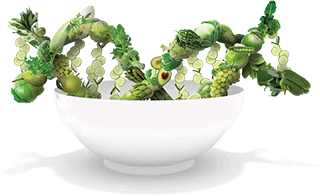Welcome to the final week of a three-part series looking at nutraceuticals. Nutraceuticals are ‘foods that contain health-giving additives and medicinal benefits’. In other words, regular food you can add to meals and snacks that help boost metabolism, suppress appetite and reduce inflammation. Watch this week’s live episode above.
This week, we’re looking at foods and spices known for their ability to reduce inflammation. What’s a thought that pops into your head when you think of inflammation? Is it a specific diagnosis? Maybe an area of your body that is sore? Let me know! There are so many signs of inflammation that people don’t understand are connected. How we sleep, how we think, our energy levels, food cravings, digestive issues, aches and pains, and our moods all are affected by inflammation. The higher the levels of inflammation in the body, the worse these conditions will be.
We can use regular, unprocessed foods to reduce inflammation. However, it’s not enough to know they exist. It takes deliberate action to have the right foods on hand, add them to meals and snacks, and then actually eat them consistently!
Let’s start with turmeric. There is such a thing as a Dietary Inflammatory Index and turmeric is scored as the most anti-inflammatory food on this scale. It has much more color than flavor. You can use it in the form of extracts or grated from fresh or powders. Only about 1/2 teaspoon is needed to gain benefits. Use it to season main or side dishes, to add to smoothies and juices and in hot drinks like tea.
Next up is ginger. Ginger is another inflammation-reducing powerhouse; from halting migraines to reducing cholesterol, triglycerides, and blood sugars, ginger even provides relief for acid reflux. It has a pungent flavor, so a little will go a long way. Ginger can be grated fresh or powdered, added to cooking, baking, or smoothies. Start with 1/2 inch fresh cube or 1tsp-1 tbsp of powder if you aren’t sure how much of the flavor you’ll like.
Moving on to tomatoes: they’re common to many diets, but the amounts used may not be maximized for the best benefit. That’s a shame because tomatoes have some serious anti-inflammatory power! Lycopene is the active component in tomatoes that is also responsible for the dark red pigment. A small can per day of low sodium vegetable juice or 1/4 cup per day of tomato paste can give results in as little as three weeks of consistent use. If you are one of those who suffer from acid reflux, try lowering your amount or switch to a different anti-inflammatory herb or spice.
Lastly, we have black cumin, also called black seed. It has a mild peppery flavor which is very different from its brown seeded cousin. A typical dosing amount is only 1/4 teaspoon, so whatever you’re adding it to is likely not to alter the taste too dramatically. This one reduces inflammation by reducing triglyceride levels, blood pressure, and blood sugar levels. It’s also known for appetite suppression and weight reduction, by the way. Its natural form is seeds that you can grind before use or eat whole. Add some to your pepper grinder.
Commit to trying one or all of these with meals or snacks to quench some of those inflammatory flames! Remember, simply because foods are found in nature doesn’t mean you’re protected against adverse reactions or sensitivities. To play it safe, stick to culinary doses (those you would use for cooking and seasoning).
Don’t forget to join weekly live topics on Facebook, Tuesdays, 1:00 pm CT.

